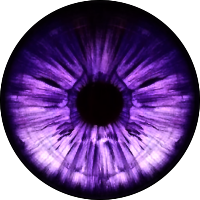
I wanted to show some tests of things I'm working on for use in Roll20. First up, when it comes to VTTs, I really despise looking straight down at what are essentially pogs with faces stamped on them. I crave a little bit of depth, reminiscent of playing with miniatures on a real table top. If all my RP group friends lived in the same city... we'd probably just play in person with printed out miniatures. Since we play online-- we (mostly I) need a solution. So, I started developing a technique for using axonometric tokens and maps stuff. Axonometric is a special type of non-perspective projection that distorts certain axes to preserve or exaggerate measurements along those axes. In this case-- I aim to preserve the floor grid while giving the walls some visibility. It is most comparable to the Ultima 6 and 7 games. For maps, the idea is that I'd paint wall pieces that face either "south" or "east." They'd consist of a floor "grout" and the wall. This would allow me to assemble the walls in an orthagonal top-down manner along with various floor puzzle pieces. Then I can assemble the wall pieces on top of the floor grout, and have them separate from the floor in such a way that I can hide occluding walls by shifting them to the GM layer. Character and Creature tokens would be made by sketching characters and monsters, scaling them, and affixing them to predesigned bases in Photoshop. I scale them to fit the grid based on their height. Once in the table top, I rotate them 45 degrees to line them up with the map artwork. Hopefully in the near future, we'll have the ability to control sorting via script-- that is the only draw back to this method is that tokens overlap, and you have to do a little extra work if you want them appear to be properly depth sorted. So be it. I prefer the added work if it gets me the depth I crave. With all that said, I wanted to share some test results. These results use google-farmed artwork for tokens. I will replace the art with original stuff when I feel I've got the kinks worked out. The map stuff is crafted in Sketchup using lego-like pieces I built based on Hirst Arts molds. I skew it in Sketchup, then export it and clean it up in Photoshop. Eventually these, too, will be replaced with original paint-overs to keep all the styling consistent. Here is what the players might see in a session: Here is what the GM sees: Some Depth testing (pretty! These room objects are modular pieces and are grouped for ease of selection): Dynamic lighting test (oh well, neat idea... I can live with the wonkiness): Thoughts? Comments? I'm aware that I'm showing off a bit ;) but if enough people get into using and making these kinds of assets, devs will be more mindful of accomodating their use.








